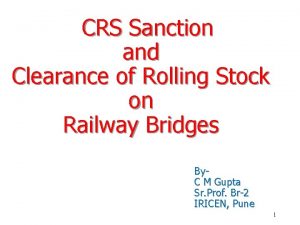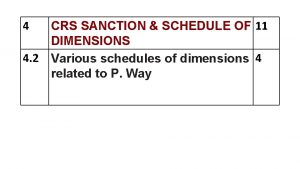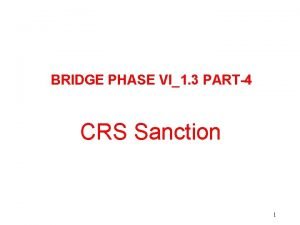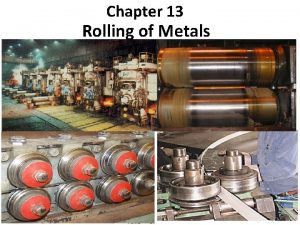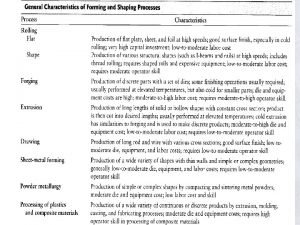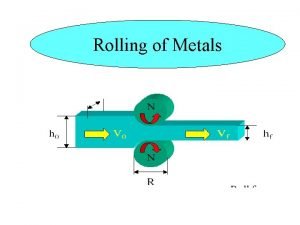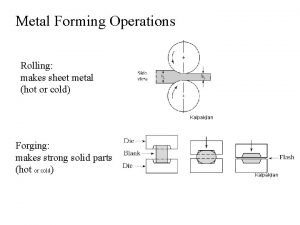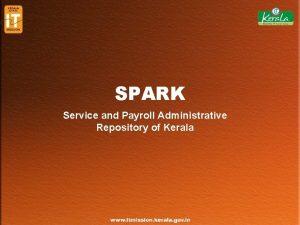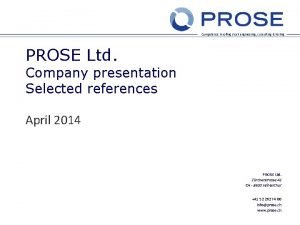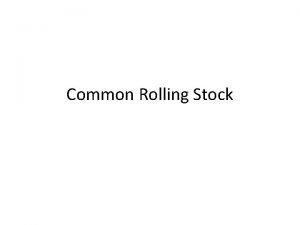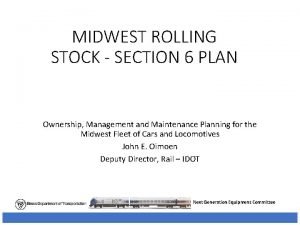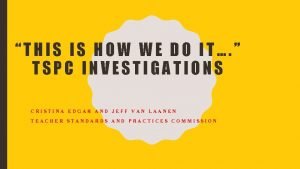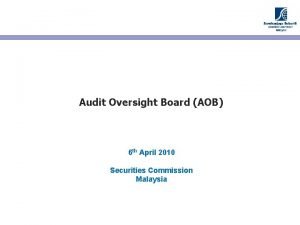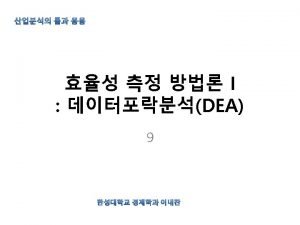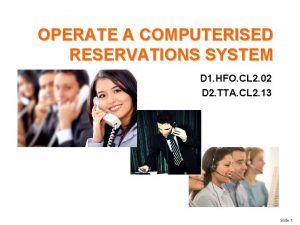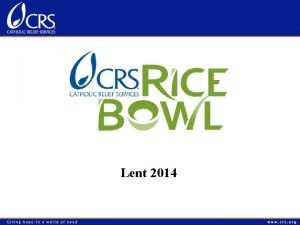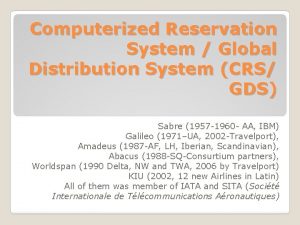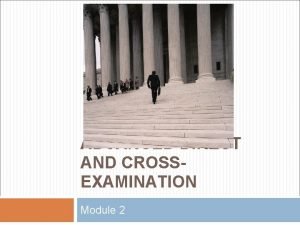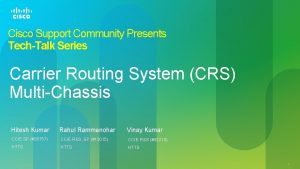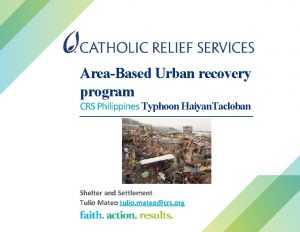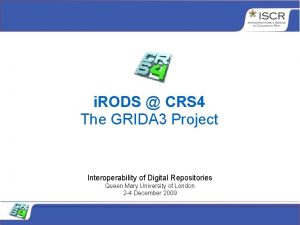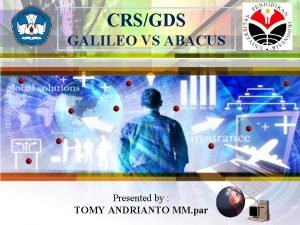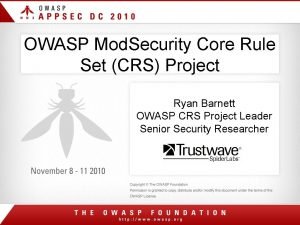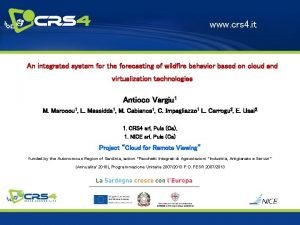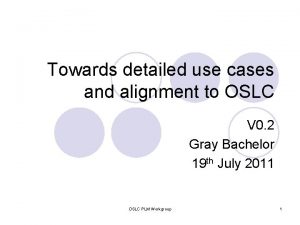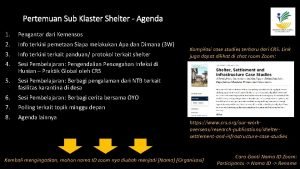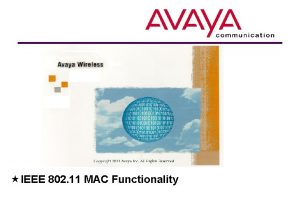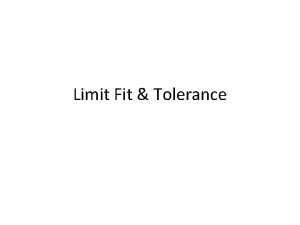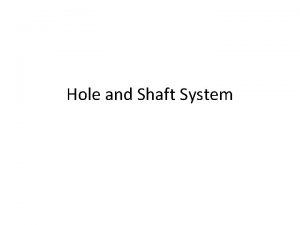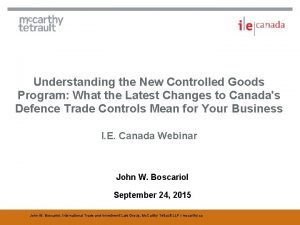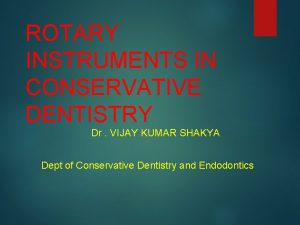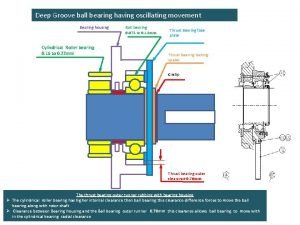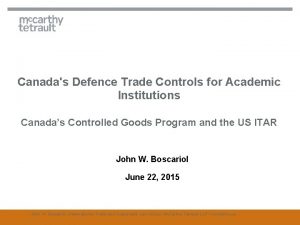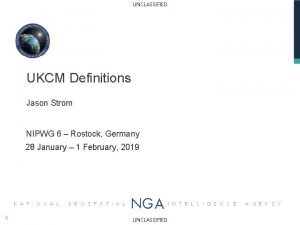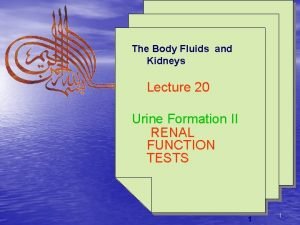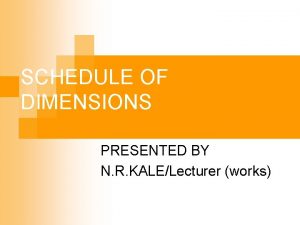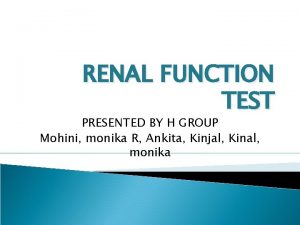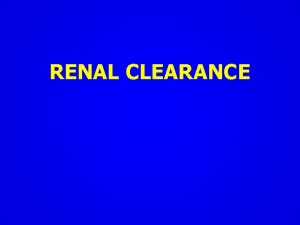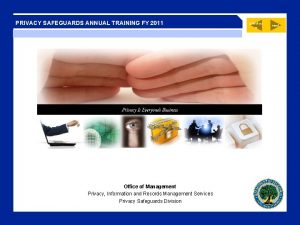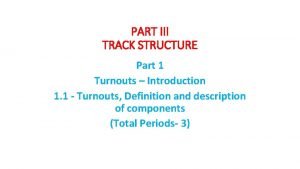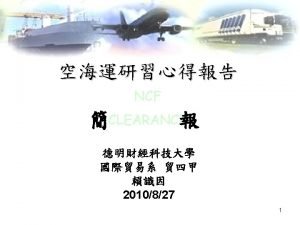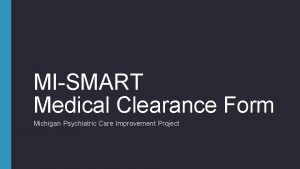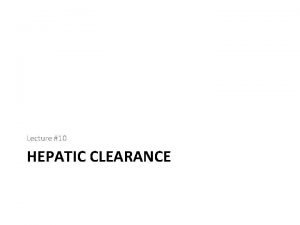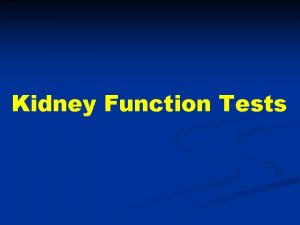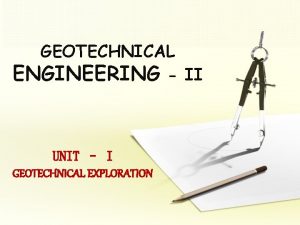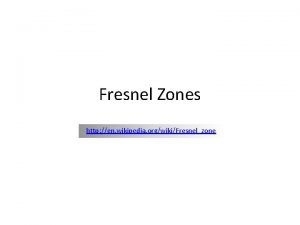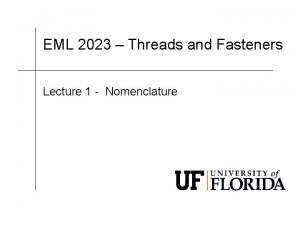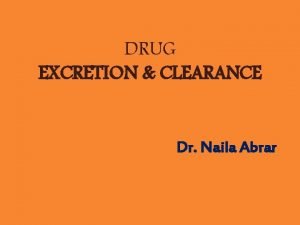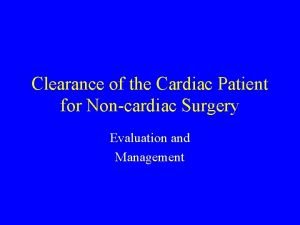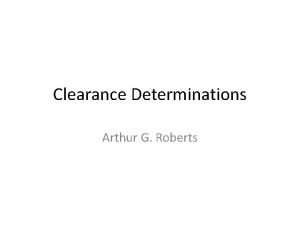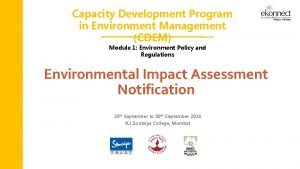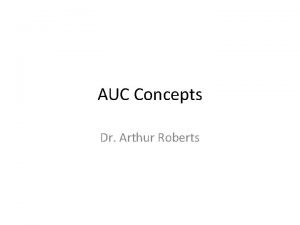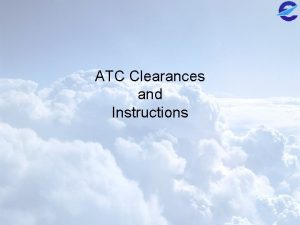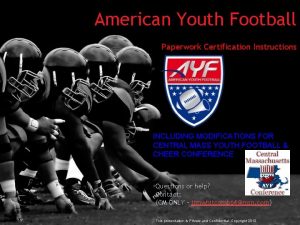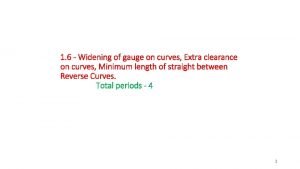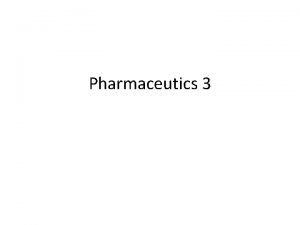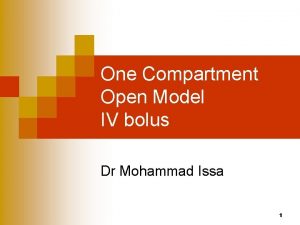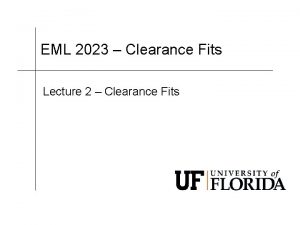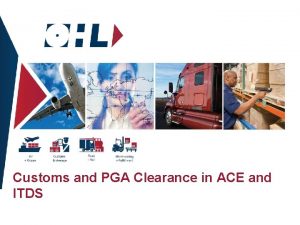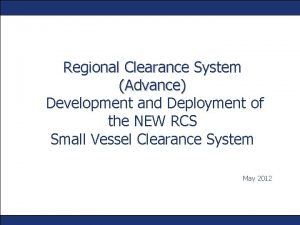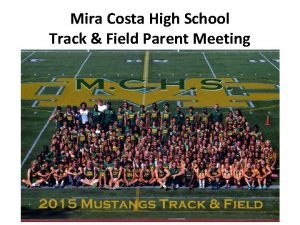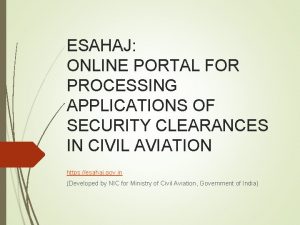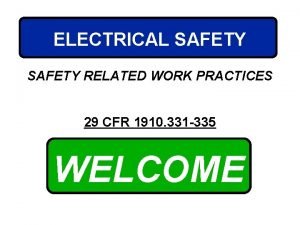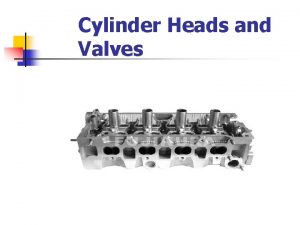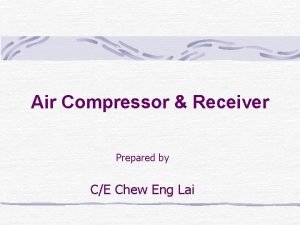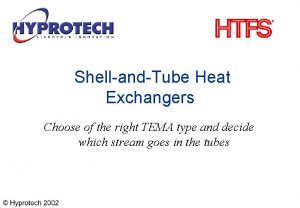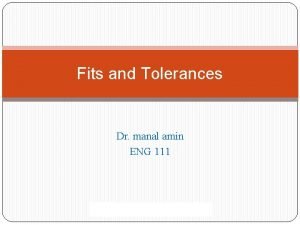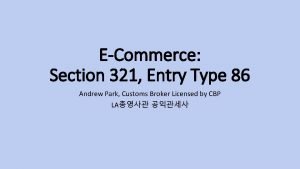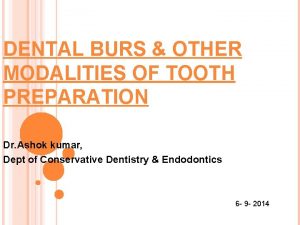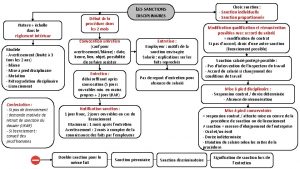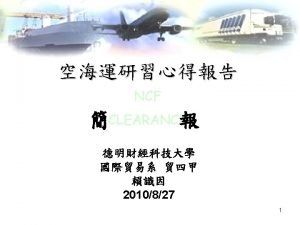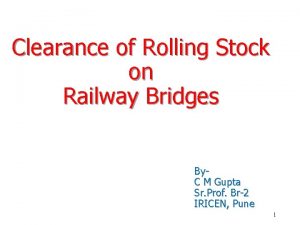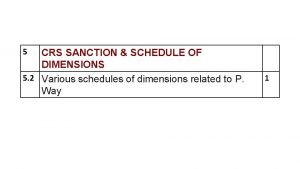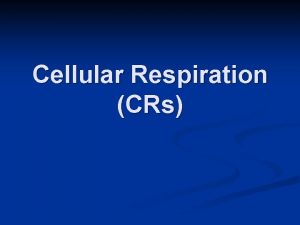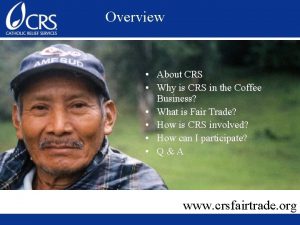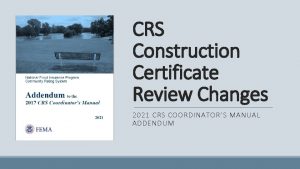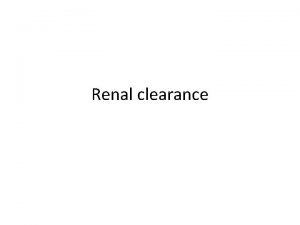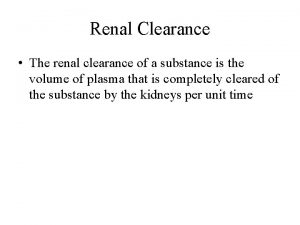CRS Sanction and Clearance of Rolling Stock on
































































































- Slides: 96

CRS Sanction and Clearance of Rolling Stock on Railway Bridges By. C M Gupta Sr. Prof. Br-2 IRICEN, Pune 1

Topics to be covered. . 1. CRS Sanction 2. Procedure for sanction of rolling stock 3. Clearance of Rolling Stock on Railway Bridges 2

CRS Sanction 3

CRS - BRIEF HISTORY ØFirst passenger train – 1853 ØConsulting engineers were appointed under the govt. of India to exercise effective control over the construction & operation of the first railways in India, which were entrusted to private companies, . ØLater, when the govt. undertook the construction of railways, the consulting engineers were designated as government Inspectors. 4

ØIn 1883, Their position was statutorily recognized. Later on, the Rly. Inspectorate was placed under the Rly. Board which was established in 1905. ØIn 1940, Inspectorates were placed under the ministry of transport and communication. Ø In 1961 an attempt to give better status, Rly. Inspectorate was re-designated as Commissioner of Rly. Safety. ØPresent position is that there is a CRS organization headed by CCRS Hq. @ Lucknow, under the ministry of civil aviation. 5

Organization Chief Commissioner of Railway Safety - Dy. Dy. Dy. CRS CRS CRS (General) (Electrical) (Mechanical) (Operating) (S&T) 6

Organisation CRS Circles Jurisdiction Northern Circle, New Delhi NR, DMRC North Eastern Circle, Lucknow NER, NCR North East Frontier Circle, Kolkata NEFR, Kolkata Metro Eastern Circle, Kolkata ER, ECR South Eastern Circle, Kolkata SER, SECR, ECo. R South Central Circle, Secunderabad SCR Southern Circle, Bangalore SR, SWR Central Circle, Mumbai CR, WCR, KRCL Western Circle, Mumbai WR, NWR 7

Function / Duties The main task of the Commission of Rly. Safety is to direct, advice & caution the Rly executives with a view to ensure that all reasonable precautions are taken in regard to soundness of rail construction & safety of train operations. (i) Opening of new lines/doubling/gauge conversions. (ii) Introduction of new rolling stocks. (iii) Works in existing lines. (iv) Inspections of existing lines. (v) Sanction of infringement to Schedule of Dimensions. (vi) Inquiry into serious accidents. 8

Extracts from P- Way manual, Chapter XIII (Paras 1301 TO 1310 including correction slips ) • Safety of traveling public is governed by rules laid down in: • IR act 1989 (24 of 1989). ( as amended from time to time). • General rules for IR. • The Rly. opening for public carriage of passengers Rules, 2000 ( as amended from time to time). • IR schedule of dimensions ( as amended from time to time). • Above rules specify the authority competent to sanction & procedure for obtaining sanction 9

Works requiring sanction of CRS Sanction of CRS is required for execution of any work on open line which will affect running of trains carrying passengers & any temporary arrangement necessary for carrying it out except in emergency. In addition to it following works require CRS sanction. 1. Opening a new line, doubling/tripling, gauge conversion etc. 2. Running of new rolling stock 3. Raising of speed sectional or specific train 10

Open line works • For commencement & opening of following works, when they are connected with Rly, sanction of CRS shall be obtained: - 1. Additions, extensions, alternations to running lines. 2. Alterations to points & crossings in running lines. 3. New signalling & interlocking installations or alterations to existing. 4. New stations, temporary or permanent, or extensions. 5. The construction (but not the removal) of an ash pit on running line. 6. Heavy re-grading of running lines involving raising/lowering of track in excess of 500 mm. 11

Contd. . 7. New bridges including road over and under bridges, foot over bridges, strengthening , raising, reconstruction, dismantling or extension of existing bridges 8. Permanent diversion (deviation) more than 2 Kms in length without any station in between & irrespective of length when new station involved. This is treated as new line as per sec. 21 to 23 of Rly. act 1989 9. Temporary diversions irrespective of length except those laid for restoration of through communication after accident. 10. Additions or alterations to electrical installations of track equipped for electrical traction. -----12

New lines, doubling etc. . • CRS sanction is required for all new lines, Doubling, Gauge Conversions etc. • Application to CRS is to be made in proper proforma as circulated by Railway Board 13

Application for sanction of works 1. Application for sanction made 30 days in advance of expected commencement of work. 2. If work not taken up within 12 months from date of sanction, CRS approached for renewal of sanction. 3. In case of divisional works, application made by Sr. DEN and /or Sr. DSTE for track, bridge & signalling/ interlocking works as the case may be DRM/ADRM should sign the application. 4. In case of works of construction organization, whether civil engg or S & T application will be signed by SA grade officer, CE/C or CSTE/C as the case may be. 14

Contd. . • In case of works involving civil engg & S&T both, application shall be signed jointly by SAG officers of S&T and Engg. • Name & designation of signatory should invariably be mentioned. • Works being executed by RVNL and IRCON are coordinated by CE/CON for preparation of application and taking CRS Sanction. 15

Documents to accompany application • Documents to accompany application are detailed in annexure 13/1 • The documents are: 1. A track certificate, indicating that track is suitable for maximum axle load there in, shall be given along with application, signed by Dy. CE (track) counter signed by CTE/CE 2. Bridge certificate indicating that bridge is designed to carry axle loads proposed to run, along with application. This certificate is signed by Dy CE/BRIDGE and counter signed by CBE /CE. For the purpose of track & bridge certificates as per annexure 13/2 & 13/3, COM should also be consulted in regard to types of locomotives & rolling stock to be used, their axle loads & speeds. 16

Documents … • 3. OHE certificate • 4. S&T certificate. • 5. C&W certificate • 6. other certificate in various forms I to for XVIII • Final certificate is signed by GM of the Railway. 17

Format of Application for CRS ANNEXURE 13/1 (Sheet 1) Para 1304. . . . . RAILWAY Application for Sanction No. . . . Dated. . . 20 From: . . To The Commissioner of Railway Safety, . . . Circle. 18

Contd. . Sir, I hereby apply for your sanction to. . . . . . . . . Being commenced and opened for the public carriage of passengers, when ready. (2) With reference to Chapter VI of the Rules for the Opening of a Railway, I beg to enquire whether you wish to inspect the work prior to its opening for the public carriage of passengers, in which case intimation will be given of the date of completion. 19

Contd. . (3) In the event of your deciding not to inspect the work prior to opening, the Engineer-in-charge will, on completion of the work, submit the Safety Certificate duly signed by him, prior to the opening of the work for public carriage of passengers and when required, also despatch a telegram ** to your address intimating that the work has been opened and the Safety Certificate has been signed by him. (4) The application for the use of locomotives and rolling-stock to be drawn or propelled thereby on the proposed line, in accordance with Section 16(1) of the Indian Railways Act, 1890 (IX of 1890), in sent herewith/not required. (5) The following documents are appended : 20

For temporary works/ permanent works as the case may be: (a) Description of proposed works. (b) Drawing of temporary/ permanent works. (c) List of infringements to Schedule of Dimensions. (d) List of deviations from the Manuals of Instructions for Signalling and Interlocking and Block Signalling. (e) List of deviations from General and Subsidiary Rules. (f) Restrictions. (g) Rules for Traffic Working. (h) Documents for bridges as per Chapter VII of the Rules for opening of a Railway. 21

Contd. . (6) Certified that a detailed examination of the strength and arrangement of the materials to be used in the temporary/permanent works in above connection, have been made and that the design and the materials to be used are upto the loads, which will be required to carry and that their opening for public carriage of passengers will not be attended with any danger. (Delete temporary or permanent work, as the case may be). Yours faithfully, 22

Submission of safety certificate • CRS in according sanction, may or may not propose to inspect the work. • If CRS decides to inspect the work prior to opening, he will, after inspection, communicate in writing his sanction to open the work. • If CRS decides not to inspect work, safety certificate in form 13/5 along with other certificates submitted to CRS before work is opened. This will be done by Officer-in-charge of work. 23

Deviations from plans approved by CRS • Prior approval of CRS is necessary, if plans already approved by CRS have any deviations, especially, which affects layout of lines or arrangements of signals or working rules. 24

Notification to Rly officials when opening works • No new work affecting running of trains or traffic working at stations should be brought into use until staff of all departments have been notified by means of a circular issued by DSO / DOM 25

Works arising out of accidents including breaches • Abbreviated procedure as laid down in section 24 of IR act 1989 is reproduced below; • When accident has occurred resulting in temporary suspension of traffic, and either the original line and work has been rapidly restored to original standard, or a temporary diversion has been laid in absence of CRS, it should be opened for public carriage of passengers, subject to following conditions; 26

Contd. . 1. a)Rly servant in-charge of work has certified in writing that opening of restored line and work or temporary diversion, will not, in his opinion be attended with danger to public. . b) a notice of the opening of the lines or rails and works or the diversion shall be sent immediately to CRS 2. The officer-in-charge, as soon as possible give intimation and certificate in form 13/6 to CRS by telegraph, of opening of line & work or diversion followed by confirmatory copies by letter. 27

• Contd. . 3. Engineering representative shall hand over a copy of certificate to representative of operating department at site of accident The optg officer at site should not allow the passage of traffic over restored road, until he gets this certificate. 4. Diversions should be tested by running a material train or light engines before opening to public traffic. 5. Certificate & telegraph advice need not be sent to CRS if line is restored for through communication within 24 hours. If use of temp diversion is likely for more than 3 days, CRS may take earliest opportunity to inspect it. 28

PROCEDURE FOR SANCTION OF ROLLING STOCK 29

INTRODUCTION v Speed of a train in a section, is based on the sanction by CRS(GR CHAPTER 4, PARA 4. 08 ) v Rules for opening of Railways for public carriage, 2005 determines the procedure to be followed for opening of new sections and Railway Board issued Policy Circular No. 6 for various issues related to sectional speed. This rules were in force from 1933 and modified from time to time. 30

v. Indian Railway Act authorises, the Railway Board, for regulating and sanctioning speeds of all type of Rolling stock. v. The procedure for certification of Maximum permissible speed for Rolling stock is defined in Policy Circular No. 6 v. PC 6 initially issued on 8. 7. 1980 subsequently revised on 23. 12. 99 and further amended on 23. 11. 2006, 09/12. 07. 2010 & 05. 01. 2016. Revised policy circular is issued on 31. 10. 2018. 31

INTRODUCTION/MODIFICATION OF A ROLLING STOCK v. Based on requirements, Railway Board may decide to introduce new rolling stocks or modify the existing one. v. Railway Board assigns the work of designing the Rolling stock to RDSO v. After designing /modifying the rolling stock and a trial on standard track, RDSO issues a provisional speed certificate for the rolling stock separately for each design or modification for certain speed with validity period. 32

v. If the validity is not defined, generally it is considered to be valid for five years vide para 3. 1. 4 of PC 6. v. Provisional speed certificate and final speed certificates to be issued by ED Standards (Motive Power) RDSO in consultation with other directorates. In case of any dispute matter to be referred to Railway Board. The performance of the rolling stock is monitored by RDSO before issue of final speed certificate. v. RDSO also conducts detailed Oscillation trial test and finally speed certificate is issued. 33

SPEED CERTIFICATE v A speed certificate consists of the following informations/documents § Nomenclature of the rolling stock § Axle load § Maximum Permissible speed in loaded/Empty conditions (in case of wagons) § Tractive efforts/Braking forces § Drawings – plan, section, elevation and profiles, moving dimensions 34

SPEED CERTIFICATE § The infrastructure requirements for operating the rolling stock with different speeds § Track § Bridges § S&T § OHE § Operating requirement like requirement of locos etc. , § loading conditions § safety precautions during loading, running toward the staff, public 35

SPEED CERTIFICATE § Inspection and maintenance facilities required for the rolling stock and RDSO may issue manuals if the Rolling stock is special type. § Routes for which the wagons are to be operated if restricted by RB. § The details of the infringement with respect to IRSOD and the details and reference of the condonation, if obtained. § Validity of the certificate in case of provisional certificate 36

JOINT SAFETY CERTIFICATE v On receipt of the provisional/final speed certificate, the concerned Mechanical /Electrical Engineer normally makes a requisition to process for sanction of Competent Authority for the introduction of the rolling stock. This department is responsible for coordinates for processing the JSC. v The speed certificate to be studied thoroughly to ascertain the departments involved and to comply various conditions prescribed in the speed certificate. 37

v JSC Contd. . v Copy of the speed certificate is to be sent to CTE to get the track certificate duly signed by Dy. CE/Track and countersigned by CTE as per the performa prescribed in PC 6. The track certificate consists of speed recommended for each sections of the Zonal Railway based on the conditions of speed certificate v Similarly Bridge certificate is to be obtained from Dy. CE/Br/HQ duly countersigned by CBE which consists of any SR on account of bridges based on the bridge requirements prescribed in the speed certificate. v The Emergency braking distance for the rolling stock is to be obtained from Mechanical/Electrical department. The EBD is normally restricted to 1 km to avoid second distant signal and thus speed is restricted in certain cases to obtain EBD within 1 km. 38

JSC contd. . v JSC is a certificate jointly signed by PHODs of technical departments viz Civil, Mechanical, Electrical, S&T and Operating about compliance of the conditions in the speed certificate pertaining to the rolling stock for which it is certified. v A draft JSC to be prepared as per the performa in PC 6, proposing max speed in various sections, assigning least of the sectional speed, speed proposed for EBD < 1 km, speed as per track certificate & bridge certificate. v The JSC should include compliance to all the conditions of the RDSO’s speed certificate duly certified by PHODs of the concerned department. 39

v JSC contd. . v The JSC should consist of Ø The nomenclature of the Rolling stock, Ø Drawing No. Ø Reference to speed certificate & amendments Ø Proposed speed and Max permissible speed in the speed certificate Ø Sections proposed for operations Ø Details of the speed restrictions Ø Special restrictions, if any Ø Compliance to the conditions of speed certificate (optional) 40

JSC contd. . v It should be circulated with a copy of speed certificate to all the departments to specify the compliance or concur the compliance proposed by the dealer to each conditions of the speed certificate v This will ensure that all the conditions in the RDSO’s speed certificate is complied in the Zone and the rolling stock is fit to be operated. If any condition is not complied in any section, then the Rolling stock can not be operated in that section. v Once the draft JSC is vetted by all technical departments, a fair JSC is prepared and put up to all PHODs for signature. 41

APPLICATION TO COMPETENT AUTHORITY v Railway Board is the competent authority to sanction for the operation of any rolling stock first time based on a JSC submitted by PHODs. v The sanction of RB is to be sought by the zonal Railway through their CRS & CCRS/LKO. v Subsequent sanctions for the same rolling stock can be sanctioned by respective GM. 42

v The application shall consist of q JSC by all PHODs q Track & Bridge certificates with annexure A & A 1 & stress sheets q If the Rolling stock is ODC, class of infringement, route & speed permitted as Annexure B q Copy of the RDSO’s speed certificate q Copy of all relevant drawings q Oscillation trail report, if already conducted and indicated in the speed certificate 43

APPLICATION TO COMPETENT AUTHORITY q Remarks on Checklist issued by CCRS q Remarks on Checklist issued by CRS, if any q Condonation for the infringement if any obtained either by RDSO or by Zone q Manuals on maintenance of the Rolling stock if specifically issued 44

SANCTION BY COMPETENT AUTHORITY v Based on the application and its enclosures, Railway Board accords sanction and communicates by a letter (in a defined proforma) indicating the nomenclature , reference to the JSC & RDSO’s speed certificate and Maximum permissible speed sanctioned, validity and special conditions if any. v On receipt of the sanction, Copy of the sanction letter along with copy of JSC and annexure to be communicated to all technical departments of HQ, CSO, DRMs & Engineering head of all Divisions. v It is the responsibility of the operating department to ensure the adherence of all the conditions and SRs incorporated in the JSC by the Divisions. 45

General Procedure • Policy Circular No. 6 of Rly. Bd. brings out the role of Rly. Bd. , RDSO, CRS & Zonal railways for certification of speeds. • Railway Board is the final authority for regulating & sanctioning speeds. • The responsibility for determining & certifying speed has, however been delegated by Railway Board 46

Speed Certificate for new stock • For any new stock, the RDSO issues a provisional speed certificate. –Based on design features and data, and comparison with other similar design stocks in service –Normally 80 KMPH for passenger and 65 KMPH for goods –If rolling stock is not “New” (similar exists), 105 KMPH for passenger and 75 KMPH for goods. –Can be increased upto same speed as that of similar after one year. • RDSO carries out oscillation trials on section decided by Executive Director Standards(Motive Power) and issues final speed certificate • Speed certificate issued by RDSO is w. r. t. standard bridges only. 47

Provisions of Policy Circular No. 6 v When speed certificate is issued for Locos, it shall be specifically for single headed or multi headed and max number of locos can be coupled together to be specified in the speed certificate v For the movement of newly designed rolling stock, independently (as dead stock in case of loco), RDSO shall issue a speed certificate duly indicating the proposed route for movement as desired by the manufacturer and the conditions in the speed certificate to be satisfied by zonal railway before allowing the movement for which a note indicating the confirmation of all the conditions in the proposed route to be approved by all PHODs concerned. CRS sanction not required. 48

49

Provisions of Policy Circular No. 6 v If the stock is proposed to be moved by attaching to a passenger carrying train, then sanction of CRS is required. v If the rolling stock under trial infringes to the SOD or exceeds the permitted axle load of the section where movement proposed, condonation from Railway board and sanction of CRS to be obtained. v For the movement of loaded special type of rolling stock for specific purpose viz military purpose, industrial needs for one time movement, Railway Board sanction through CRS/CCRS to be obtained duly adhering all the procedures already discussed. 50

Provisions of Policy Circular No. 6 v. Increasing the length of trains (upto 24 coaches + 1 IC) q The platforms in the stopping stations, should have minimum required length and width, lighting and watering arrangements and without any infringement q Such cases, PCE (or) CE (C) can accord sanction for the proposed length of train upto 24 + 1 IC without CRS sanction. 51

Provisions of Policy Circular No. 6 v. Increasing of speed (above 110 Kmph and upto 120 kmph). q A route proving run with (a) portable accelerometer (OMS) mounted on Loco and representative vehicles) operated at proposed speed and the test results to be recorded. If the results are within the permissible limits prescribed in C&M-1 Vol I (>0. 30 g < 0. 25 peaks/km) , then PCE can sanction running of the first train at this speed in usual procedure. q (Detailed procedure for the above run, is explained in Appendix I of PC 6) q Subsequent additional trains or increasing length of existing train upto 24 + 1 IC of similar rolling stock and loco already sanctioned can be introduced by PCE without route proving run and signing of JSC 52

Provisions of Policy Circular No. 6 v Increasing of speed above 120 Kmph upto 130 Kmph. q Rolling stocks are now designed, manufactured with speed potentials more than 120 Kmph q to increase the speed of nominated trains above 120 kmph upto 130 Kmph , a confirmatory Oscillograph Car run (COCR) to be done with instrumented loco and/or representative vehicles. q for conducting the above COCR, GM sanction to be obtained based on the speed certificate issued by RDSO for this purpose. q The length of train for such operations is restricted to 26 coaches and q any increasing in length, fresh RDSO certificate, GM sanction is required q Subsequent additional trains or increasing length of existing train upto 26 + 1 IC of similar rolling stock and loco already sanctioned can be introduced by GM without route proving run/ COCR and signing of JSC 53

Provisions of Policy Circular No. 6 v Increasing of speed beyond 130 Kmph. qto increase the speed of nominated trains above 130 kmph, a confirmatory Oscillograph Car run (COCR) to be done with instrumented loco and/or representative vehicles. qfor conducting the above COCR, CRS sanction to be obtained based on the speed certificate issued by RDSO for this purpose. q. Railway Board sanction is required for first train on that route. q. The length of train for such operations is restricted to 26 coaches and qany increasing in length, fresh COCR is required. q. Subsequent additional trains or increasing length of existing train upto which COCR is already done IC of similar rolling stock and loco already sanctioned can be introduced with CRS sanction 54

Provisions of Policy Circular No. 6 v Sanction of existing rolling stock in other sections q In case of a rolling stock already sanctioned for running in any section (s) of a Railway, sanction can be accorded by GM on submission of JSC for any other section of that railway v Conducting special trials and condition of operations (viz EBD, Coupler force trial etc, ) q Speed certificate with formation & route specified and sanction of CRS required. v Maximum speed for speed trials: 10% excess of the final maximum permissible speed except over curves 55

Clearance of Rolling Stock on Railway Bridges 56

Clearance on Railway Bridges The process of studying the suitability of bridges and clearing the rolling stock is termed as ‘Clearance of rolling stock on railway bridges’. Procedure specified in “ Guidelines for clearance of rolling stock on Railway bridges issued by RDSO”. 58

Flow chart for speed clearance on bridges 59

Train Formation • For clearance of locos, trailing load to be assumed • For clearance of wagons/coaches, locos to be assumed 60

Clearance of Locomotives i) Vertical load: BOXN wagons (7. 59 t/m or 8. 25 t/m for CC+8+2) or higher as per the case may be assumed. For 25 t axle load – 9. 33 t/m ii) Longitudinal force : a) Loco/s + BOXN wagons (10% axle load as braking force) b) Loco/s + Coaches (16. 25 t axle load with braking force as 13. 4% of axle load) 61

Clearance of Wagons/Coaches i) Vertical load: a) 2 WDM 2 or 2 WDG 2+wagons/coaches for clearance b) 2 WAG 9 H+wagons/coaches for clearance ii) Longitudinal force: A combination of 2 WDM 2 or 2 WDG 2 or 2 WAG 9 H which can exert 22. 0 t, 22. 05 t and 26. 5 t braking force per loco respectively, along with wagons/coaches. NB: The above may, however, change when new rolling stocks are introduced. TE for WAG 9 loco is 52 T, newer locos can have TE upto 84 T. 62

Clearance on Railway Bridges Para 2. 1. 1 of Guidelines for clearance of rolling stock on railway Bridges a) The clearance refers to standard bridges and standard spans of girders (including bearings), slabs, pipes, culverts, piers & abutments, etc for BGML, RBG & MBG loadings. b) All other designs of super-structures (incl. bearings), and sub-structures are to be examined under the direction of the Chief Engineer concerned and certified safe in terms of current IRS Bridge Rules, Steel Bridge Code, Bridge Substructure and Foundation Code, etc. read with upto date Correction Slips. 63

Data for Clearance • • • Speed potential of the stock Speed at which the stock/train is to be cleared Train formation Axle loads Axle distances (including buffer to adjacent axle distance) • Tractive effort in case of motive power unit • Braking force • Height of c. g above rail level for the stock 64

Clearance Study 1. Rules for assessing the strength of existing railway bridges given in clause 3 of IRS Bridge Rules. 2. Induced loads should be < Design loads 3. Loads considered for clearance: i) live load ii) impact load iii) longitudinal force iv) Eccentricity load if the bridge is in curve or track over bridge is in curve 65

Clearance Study 1. RDSO has issued a software “Moving Loads” which shall be used for analysis of the bridges in place of standard EUDLs. 2. Para 3. 6: If a bridge is found inadequate for a loading standard, the bridge is to be checked using actual train axle loads using the software (CS No 37) 66

Rules to Assess Strength of Existing Bridges (Clause 3 of IRS Bridge Rules) Dynamic augment: • Where no rail joint is there on a span and within 10 m on its approaches, the CDA calculated as per para 2. 4. 1 and 2. 4. 2 may be diminished by an amount equal to 0. 75/(span in m) subject to maximum reduction of 20% of the calculated value for span of 7. 5 m or less (Para 3. 3). • CDA calculated as above may be multiplied by the factor (Vr/V), where Vr is the permissible speed and V is 125 km/h for trains hauled by diesel/elect. loco. (Para 3. 3. 1(a) (i)) (20 -40% reduction) • Bridges found fit for 125 km/h on BG may be cleared for speeds upto 160 km/h for passenger services with stock specially cleared to run at such speeds. (Para 3. 3. 1 Note (1)) • The coefficient of dynamic augment shall in no case be taken less 67 than 0. 1. (Para 3. 3. 2)

Rules to Assess Strength of Existing Bridges Dynamic augment above is subject to condition that: • Bridge shall be in sound condition. • It shall be certified that the speed will not be exceeded. • If speed restricted to get the CDA within limit, transportation branch responsible to ensure the speed restriction is rigidly observed. 68

Rules to Assess Strength of Existing Bridge (Contd. ) Tractive force: For trains hauled by diesel or elect. locomotives, the max. tractive force shall be as specified for the locomotive distributed equally amongst the driving axles. Braking force: The braking force for such locomotives shall be as specified for them distributed equally amongst the braked axles, together with 10% of the weight of the braked trailing axles covering the loaded length, if fitted with vacuum brakes. For trailing axles fitted with air brakes, braking force shall be as specified for them distributed equally amongst the braked axles covering the loaded length, subject to a max. of 13. 4% of the weight of the braked axles. (Para 3. 4) 69

Rules to Assess Strength of Existing Bridge (Contd. ) Dispersion & distribution of longitudinal forces: • In case of bridges having open deck provided with through welded rails, rail-free fastenings & adequate anchorage of welded rails on approaches (by providing adequate density of sleepers, ballast cushion & its consolidation, etc; but without any SEJs) dispersion of longitudinal force through track, away from the loaded length, may be allowed to the extent of 25% of the magnitude of long. force and subject to a minimum of 16 t for BG. This shall also apply to bridges having open deck with jointed track with rail-free fastenings or ballasted deck, however without any SEJ or mitred joints in either case. • Where suitably designed elastomeric bearings are provided the aforesaid dispersion may be increased to 35% of the magnitude of longitudinal force. (Para 2. 8. 3. 2) BACK 70

Rules to Assess Strength of Existing Bridges (Contd. ) Dispersion & distribution of longitudinal forces: • The dispersion calculated above shall not exceed the capacity of track for dispersing the longitudinal force to the approaches nor shall it exceed the capacity of anchored length of the track on approaches to resist the dispersed longitudinal force (Para 2. 8. 3. 3) • For new bridges/ rebuilding, the dispersion as above shall not be considered ( CS No 36 to Bridge Rules) 71

Rules to Assess Strength of Existing Bridges (Contd. ) Correction Slip No 34 has introduced new clause 3. 5 in the Bridge Rules: Clause 3. 5: For checking adequacy of the existing bridges for permitting rolling stock involving higher loads, the bridge shall not be considered to be carrying any live load when the wind pressure at deck level exceeds 100 Kg/m 2 (0. 98 k. N/m 2) Correction Slip No 35 gives loading diagrams for BGBL, BGML, RBG loading of 1975. 72

Vertical Load Consideration 1. EUDL + impact load of train formation to be within design EUDL + impact load 2. The most practicable and commonly used way of reducing the impact load is by reducing the speed Design load: • • Standard bridges - Standard loadings (BGML, RBG or MBG) Non-standard bridges - Percentage of standard loadings N. B: Even when the axle load is within design standards, a higher EUDL may be induced on some spans due to closer spacing of axles. 73

Vertical Load Consideration (Contd. ) 3. Percentage strength required for the span to move the train at a speed of ‘VS’ IT = where, VS = Proposed speed of the train (10% to 30% more than operating speed) LLD = Design EUDL ID = Design impact factor LLT = EUDL of the train IT = Impact factor for the given speed of train ; should not be less than 0. 1 as per clause 3. 3. 1 of Bridge Rules VD = Design speed of bridge (Clause 3. 3. 1 of Bridge Rules) = 125 km/h on BG for diesel/electric traction 74

Vertical Load Consideration (Contd. ) 4. Maximum allowable speed VM Design Load = LLD + LLD * ID Train Load = LLT + LLT * IT Equating both: LLD + LLD * ID = LLT + LLT * IT or, LLD + LLD * ID – LLT = LLT * IT Since, IT = ID * VM VD 75

Vertical Load Consideration (Contd. ) 5. Percentage strength & maximum allowable speed to be worked out separately for Bending Moment and Shear Force EUDLs. Max. of the two for Percentage strength and minimum of the two for maximum allowable speed to be considered. 76

Longitudinal Force Consideration Bridges are designed to: S. No. Loading Std. 1. 2. 3. BGML-1926 RBG-1975 MBG-1987 Max. TE(t) 47. 60 75. 00 100. 00 Max. BF 10% of TLD 20% of TLD 13. 4% of TLD • Bridges constructed prior to 1926 designed without longitudinal forces • Does not depend on speed • Longitudinal force more than designed force would cause overstressing of bridge components 77

Longitudinal Force Consideration (Contd. ) 1. Standard bridges designed for max. of tractive effort or braking force due to standard loadings. 2. Long. forces govern design of bearings and substructures in open web girders. They also affect design of bottom chords and bottom lateral bracings. 3. Braking force governs in case of longer spans whereas tractive effort governs in case of shorter spans. 4. Tractive effort and braking force are on increase due to introduction of higher horse power locomotives and air -braked trailing loads. 5. Most of the bridges are to BGML standard or standards existing prior to that. 78

Longitudinal Force Consideration (Contd. ) 6. As per clause 3. 4 of Bridge Rules (A&C No. 23, Dt. 2610 -99): i) Tractive effort - As specified for the loco distributed amongst the driving axles ii) Braking force - As specified for the locomotives distributed equally amongst the braked axles + 10% of the braked trailing load for vacuum brakes or 13. 4% of the braked trailing load for air brakes N. B: As per Wagon Directorate, braking force of BOXN wagon has been restricted to 10% of axle load. 79

Longitudinal Force Consideration (Contd) 1. If the induced tractive forces with dispersion and induced braking forces without dispersion exceed the design longitudinal forces, clearance cannot be given. 2. However, if the induced longitudinal forces with dispersion are within the design longitudinal forces, but not without dispersion, clearance can be given with the condition that the ‘track on bridges and approaches shall be strengthened or modified in such a way so as to allow the dispersion as per clause 2. 8. 3. 2 of Bridge Rules’. 80

Stocks having higher C. G. than standard As per clause 2. 5. 3 of IRS bridge rules, the CG of the BG stock shall be assumed to act at 1830 mm above rail level. If the height of the CG of vehicle is more than this, the allowable speed is calculated as: VC=VV*(HS/HR) VC: Allowable speed VV: Allowable speed from vertical load considerations. HS: 1830 mm HR: height of CG of rolling stock above RL 81

High speed train trials As per Para 4. 1 of the “Guidelines for Clearance of rolling stock on railway bridges” issued by RDSO, the impact factor for the high speed train trials shall be worked out with the following formula ITHS=ID +[(VHS-160)/125] X ID ITHS : Impact factor at high speed ID: Impact factor as per IRS bridge rules VHS: Proposed high speed. This impact factor is only for trials and the detailed study is required for the actual impact factor to be worked out. 82

Heavy Haul trains As per Para 4. 2 of the “Guidelines for Clearance of rolling stock on railway bridges” issued by RDSO, the heavy haul trains shall have different longitudinal train dynamics. There are high coupling forces due to high buffing forces and slacks, and due to sags/summits and lack of coordination between locos. Further for heavy haul trains, the CDA, fatigue life and lateral forces are expected to be different than normal trains. 83

Over Dimensional Consignments As per Para 4. 3 of the “Guidelines for Clearance of rolling stock on railway bridges” issued by RDSO, the ODCs may be required to be moved on special wagons with 12/20/24 axles etc. The train formation for the moving the consignment is made by the wagon directorate along with the drawing of the wagon in loaded condition. The same is to be checked for loads. Longitudinal load considerations do not normally arise. The load calculated is reduced by 10% to 30% to allow for the poor suspension characteristics of the wagons. Care is to exercised regarding the CG of the load and the possibility of the shifting of the load while calculating the stresses. 84

Cranes As per Para 4. 4 of the “Guidelines for Clearance of rolling stock on railway bridges” issued by RDSO, the cranes have four conditions: • Running attached to a train • Running on own power, jib resting on match truck • Lifting the load while standing on the bridge with load on the jib • Running on own power with the load on the jib When load is lifted on jib, the wheel loads get increased considerably due to eccentricity of the load. Additional impact due to the oscillations of the load and the upward acceleration when the load is lifted up. The increase is taken as 30 %. In the fourth case, if the speed of movement is more than 10 KMPH, the impact due to oscillations of load of 30 % to be considered. 85

Clearance for higher axle loads For bridges constructed to BGML and RBG, maximum axle load is 22. 9 T. If higher axle load comes, the study is to be done for: • Non - Ballasted deck: The longer spans may be safe but the smaller spans may be failing. Separate study for the smaller spans shall be made. • Ballasted Deck: The pipes, slabs etc where the dispersion of load through earth, ballast, slab etc is considered, separate study is required 86

Speed Certified The speed certified is the speed potential on the bridge calculated as per the stipulations and reduced by : • 10% of speed potential or 10 KMPH, whichever is less, to account for any inadvertent over speeding • For ODCs, speed is reduced by 10% to 30 % to account for the inferior suspension characteristics and/or unequal loads in the axles. 87

Checking Sub structure (As per Substructure Code) As per clause 5. 16. 2. 2 of sub structure code, the factor of safety can be reduced as per the condition of the structure Max Comp Stress Factor of safety Remarks Without occasional load With occasional load As per Cl 5. 14. 3 and 5. 14. 4 ≥ 6 ≥ 4. 5 Upto 100% over stress ≥ 3 ≥ 2. 25 Subject to the good condition of the masonry Upto 200% over stress ≥ 2 ≥ 1. 5 Subject to the good condition of the masonry and close observation as specified by CE after new stock is introduced. > 200% overstress <2 < 1. 5 Strengthening to be done 89

Checking Sub structure Note: If the tensile stress exceeds by more than 100% of the values given in IRS Bridge Substructure Code, the tensile zone shall be neglected and the equivalent compressive stress shall be worked out. (Para 5. 16. 2. 2) 90

Checking Sub structure • • • Upto 50 % overstress in bending compressive stress specified in IRS concrete bridge code is permitted subject to good condition of the mass concrete and close observation as specified by the CE. If overstress in compression exceeds 50 %, strengthening/ rebuilding to be done. If the tensile stress exceeds by more than 100% of the values given in IRS Bridge Substructure Code, the tensile zone shall be neglected and the equivalent compressive stress shall be worked out. (Para 5. 16. 2. 3) 91

Checking Sub structure Where theoretical check is not possible or the results of theoretical check are inconsistent with the physically sound condition of the bridge (C S No 23), the running of locomotives and rolling stock with heavier tractive effort/ braking force may be permitted subject to physical condition being certified and the bridges being kept under close observation as specified by CE. The increase in tractive effort/ braking force shall not be more than 20% over the level prevalent in the last one year or so. (Para 5. 16. 2. 4) 92

Checking Sub Structure for GC Existing gravity type substructures may be permitted in the broader gauge subject to the following levels of overstress over the values given in the para 5. 14. 3 and 5. 14. 4: • 100 % overstress in compression in case of masonry and no overstress in compression in concrete. • 100 % overstress in tension in case of masonry and concrete. (Para 5. 16. 3) 93

Checking Design of Foundation Pressure on the soil at the base of the foundation shall be compressive throughout and the maximum value shall not exceed safe bearing pressure of soil and the shear stress and settlement shall be within limits. If tension develops, the foundation pressure shall be calculated on the reduced area of contact. (Para 5. 16. 2. 5) 94

EXISTING STEEL GIRDER BRIDGES • 3. 20. 2: If bridge engineer is regularly inspecting a bridge; and impact is within limits of IRS bridge rules: • PLATE GIRDER: • Allowed if combined stresses in members do not exceed specified values by more than 11% • Rivet stresses allowed to be exceeded upto 25% • OPEN WEB GIRDER: • Allowed if combined stresses in members do not exceed specified values by more than 5% • Rivet stresses allowed to be exceeded upto 10% 95

Inspection of steelwork • Overstressed members to be kept under observation: • 25 T loading, • members overstressed upto 95%-100%: 30. 5 m underslung to BA-11232: L 1 -U 2 • members overstressed upto 100%-105%: 76. 2 m through to BA-11382: U 3 -L 4, U 1 -L 2, U 4 -U 5, L 0 -U 1 • Steel Bridge Code para 3. 20. 2 permits 5 % overstress, subject to regular observation 96

Overstressed Steelwork Inspection • RDSO letter No CBS/25 t/Axle load dated 17. 06. 2009 • All members overstressed as also all members having stress within 95%-100% shall be observed during inspection • Members shall be easily identified in field by 3 yellow bands of 100 mm width, one on each nodal point and one in the middle of the member 97

THANKS 98
 Crs sanction in railway
Crs sanction in railway Crs sanction in railway
Crs sanction in railway Vi1 certificate
Vi1 certificate Zipper cracks in rolling
Zipper cracks in rolling Rolling formula
Rolling formula This chapter describes
This chapter describes Hot rolling
Hot rolling Hot rolling vs cold rolling
Hot rolling vs cold rolling Service and payroll
Service and payroll Rolling stock engineering
Rolling stock engineering Bcn wagon length
Bcn wagon length Rolling stock planning
Rolling stock planning Différence entre punition et sanction animation
Différence entre punition et sanction animation Tspc discipline
Tspc discipline Aob sanction
Aob sanction Ssp esign
Ssp esign Sanction behind directive principles
Sanction behind directive principles Vrs and crs
Vrs and crs Long-term debt preferred stock and common stock
Long-term debt preferred stock and common stock Preferred stock characteristics
Preferred stock characteristics Crs tourism
Crs tourism Crs rice bowl app
Crs rice bowl app Crs gds
Crs gds Crs 13-90-101
Crs 13-90-101 Cisco crs-16/s-b
Cisco crs-16/s-b Crs
Crs Crs-4-fc
Crs-4-fc Abacus crs
Abacus crs Larimer county child protective services
Larimer county child protective services Owasp modsecurity core rule set (crs)
Owasp modsecurity core rule set (crs) Integrated crs
Integrated crs Plm crs
Plm crs Crs lombardia
Crs lombardia Oyo crs
Oyo crs Ieee
Ieee White stock yang sesuai dengan kriteria yaitu
White stock yang sesuai dengan kriteria yaitu Stock initial
Stock initial What is shaft basis system
What is shaft basis system Transistion fit
Transistion fit Cgp and itar clearance
Cgp and itar clearance Rotary instrument in dentistry
Rotary instrument in dentistry Clearance between bearing and shaft
Clearance between bearing and shaft Cgp and itar clearance
Cgp and itar clearance Interocclusal clearance
Interocclusal clearance Nipwg
Nipwg Pah clearance
Pah clearance Creatinine clearance
Creatinine clearance A class odc gross clearance
A class odc gross clearance Environmental sanitation clearance
Environmental sanitation clearance Urea clearance test
Urea clearance test First order kinetics
First order kinetics Clearance equation renal
Clearance equation renal Public trust clearance
Public trust clearance Heel block in railway
Heel block in railway Ncf clearance
Ncf clearance Smart medical clearance
Smart medical clearance Fade margin formula microwave
Fade margin formula microwave Liver circulation
Liver circulation Gfr formula
Gfr formula Athletic clearance.com login
Athletic clearance.com login Hmis data entry format
Hmis data entry format Wash boring
Wash boring Fresnel clearance formula
Fresnel clearance formula Clearence osmolar
Clearence osmolar Eeo preaward clearance
Eeo preaward clearance Clearance hole chart
Clearance hole chart Clearance vs elimination
Clearance vs elimination Cardiac clearance meaning
Cardiac clearance meaning Hepatic clearance formula
Hepatic clearance formula Creatinine
Creatinine Public hearing for environmental clearance
Public hearing for environmental clearance Elimination vs clearance
Elimination vs clearance Atc
Atc American youth football medical clearance form
American youth football medical clearance form Urea clearance test
Urea clearance test Extra clearance on curves
Extra clearance on curves Smart medical clearance form
Smart medical clearance form Intelligence careers nsa
Intelligence careers nsa Total body clearance equation
Total body clearance equation Half-life calculation example
Half-life calculation example Nursing process is organizes in which sequence?
Nursing process is organizes in which sequence? Maintenance dose slideshare
Maintenance dose slideshare Eml2023
Eml2023 Customs pga
Customs pga How to win the business strategy game
How to win the business strategy game Vessel clearance system
Vessel clearance system Adidas high jump spikes
Adidas high jump spikes Clearance hole definition
Clearance hole definition Bcas intranet
Bcas intranet 29 cfr 1910
29 cfr 1910 Valve seat angle
Valve seat angle How to measure bumping clearance in air compressor
How to measure bumping clearance in air compressor Wcb saskatchewan clearance
Wcb saskatchewan clearance Twisted tube heat exchanger
Twisted tube heat exchanger Clearance fit example
Clearance fit example Section 321 restrictions
Section 321 restrictions Shapes of dental burs
Shapes of dental burs
